Living with arthritis: Tips for bathing, showering, using the toilet and navigating the bathroom
24 January 2024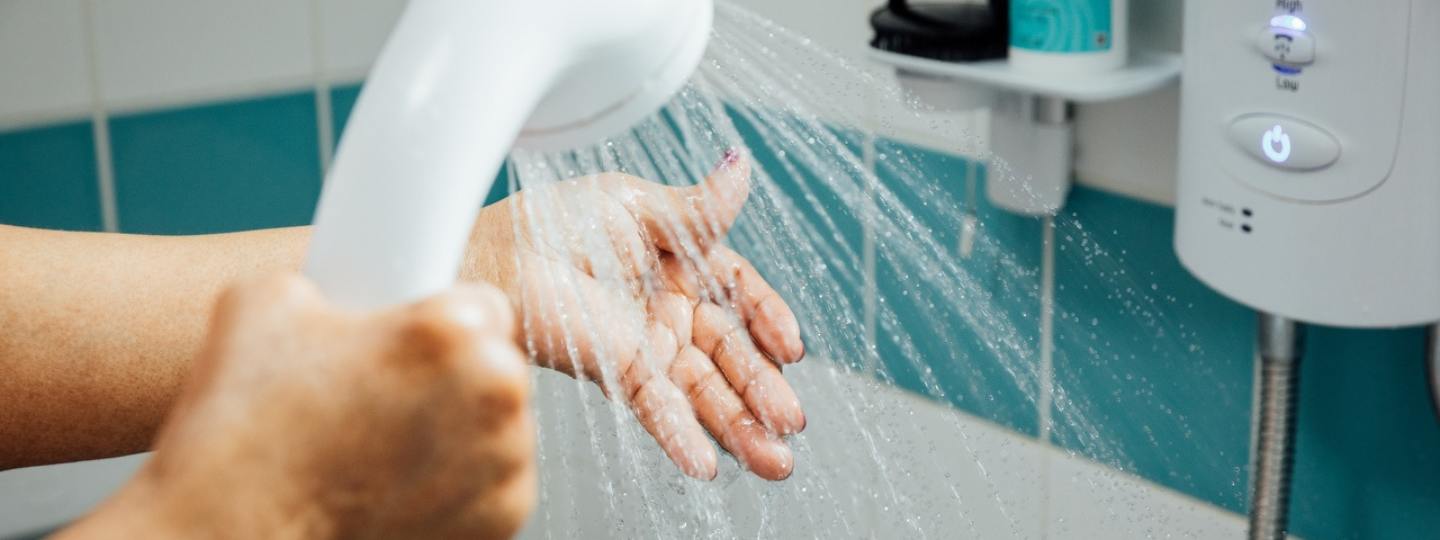
We know that everyday tasks — like washing your hair or getting on and off the toilet — can become all the more challenging when you’re dealing with pain and fatigue. But there are small steps you can take to make your daily routine a little easier.
Here Christina MacLeod, Occupational Therapist, shares her advice for navigating the bathroom when you have arthritis. An occupational therapist is a healthcare professional who can help you carry out everyday tasks, maintain your independence and doing the things you enjoy.
Getting in and out of the shower or bath
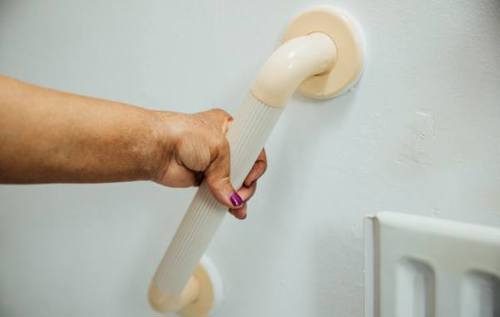 Slipping in the bathroom is a hazard for anyone, but if you have balance issues, Christina says a grippy non-slip bathmat is a must. Just make sure you can lift your feet high enough, so you don’t trip on it.
Slipping in the bathroom is a hazard for anyone, but if you have balance issues, Christina says a grippy non-slip bathmat is a must. Just make sure you can lift your feet high enough, so you don’t trip on it.
If you find it difficult to get in and out of the bath or shower, it might be worth installing a rail too. Grabbing this might make you feel a bit safer and more comfortable. But just make sure it’s securely attached to a strong wall first.
If you have sore hands, Christina says you could alternatively get “a bath hoist which goes up and down.”
Sitting in a shower chair
If you find it challenging to stand for a long time in the shower, Christina says “you could use a shower stool”. These waterproof seats may help you stay stable while you scrub. Plus, sitting will take pressure off your knees or hips if they’re achy.
Washing in the shower or bath
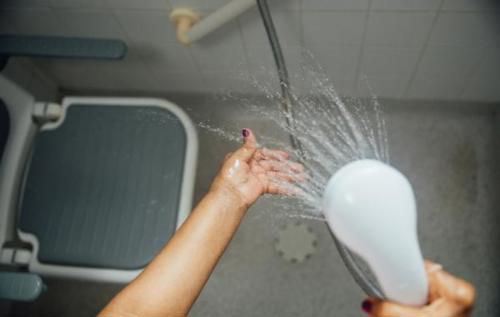 If you have stiff or painful hands, it can sometimes be difficult to wring out washcloths. If this is the case for you, Christina suggests using “a soft baby sponge or a natural sponge because they’re easier to squeeze against the side of the bath.”
If you have stiff or painful hands, it can sometimes be difficult to wring out washcloths. If this is the case for you, Christina suggests using “a soft baby sponge or a natural sponge because they’re easier to squeeze against the side of the bath.”
Bending over to wash your feet can also be tiring, so if you find this difficult, you could:
- try using a long brush.
- using a foot scrubber, which has suction cups that you can stick to the floor.
On those more painful or tiring days, it’s also okay to use wet wipes or wash yourself at the sink, if you find that easier. Remember to pace yourself and find what works for you.
Washing your hair
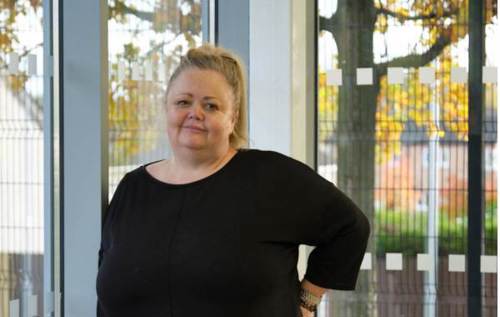
Washing your hair can be exhausting at times so, if you're struggling, you could wear a shower cap or use dry shampoo, if that’s easier for you.
Tracey, 58, lives with osteoarthritis, and says that she “can't hold [her] arms up long enough to wash and condition [her hair]”.
“Now I go to the hairdressers every week and get my hair washed. The only reason that I knew that [washing my hair was tiring me out] was because I recorded the activity, how long it took me and how I felt afterwards.”
Using shampoo and shower gel bottles
It can be tricky for some people with arthritis to open shower gel bottles or squeeze shampoo bottles. If you find this challenging, you could try:
- Using automatic dispensers or pump action bottles.
- Asking someone to empty your products into easy-to-use containers.
Brushing your teeth
Brushing your teeth is something we do daily, but it can be frustrating if you have poor grip. If you find this task sore, Christina suggests:
- Wrapping rubber bands around your toothbrush to make it thicker and easier to grip.
- Using an electric toothbrush.
- Using a child’s toothbrush or a small headed toothbrush if your jaw is tense or achy.
- Using aids, such as a toothpaste squeezer or toothpaste pump.
Towelling
If you find towelling tiring after washing, Christina suggests opting for:
- lightweight towels.
- a towel bathrobe.
- a flannel mitt.
Pace yourself
For many people with arthritis, one of the biggest hurdles they face is fatigue. If this sounds like you, Christina says it’s all about prioritising and pacing yourself.
“Do a little bit and then a little bit more if you’re up to it," she says. "In the morning, you might want to give yourself time to eat your breakfast, rest, take your medicine, and then get ready. That way, your tablets are working before you get in the shower.
Tracey, 58, lives with osteoarthritis and says it’s important to “check in with yourself”.
“Maybe you know that showering for 10 minutes is okay, but that when you shower for longer and wash your hair your shoulders end up killing you."
“Don't keep going and going. That’s when you run into problems and overexert yourself. Depending on how you feel that day, adapt how much or how little you do, and plan in breaks.”
Adapt your routine
It’s also worth considering the time of day you wash. Some people tend to have worse symptoms in the morning. Others might feel more painful or tired in the evening. Timing your daily wash around your energy or pain patterns, might make it a bit more comfortable for you.
Make-up and hair
Enjoy wearing a bit of makeup or styling your hair? If this is something that matters to you, there might be ways you can simplify your routine. For instance, Christina suggests:
- Asking someone to empty your products into easy-to-use containers.
- Using make-up sponges or long-handed brushes to apply your make-up.
- Opting for easy hairstyles where possible.
- Using lightweight or long-handled combs and brushes.
- Using a hairdryer holder, if you find it difficult to hold a hairdryer for a long time.
Getting on and off the toilet
Lowering yourself down onto the toilet and standing back up again can be difficult for some people with arthritis. If this is challenging for you, Christina says you might want to consider:
- Wearing clothes that are easy to get on and off.
- Getting a raised toilet seat.
- Getting your toilet plumbed at a higher level, if you can afford it.
- Getting a rail installed to make it easier to stand up. Just make sure the wall is strong enough. Alternatively, you can get toilet seats with rails too.
- Using thicker or folded toilet roll, if you find it difficult to grip.
- Using bottom wipes.
Doing regular sit to standing exercises might also improve your mobility and strength.
Changing your taps
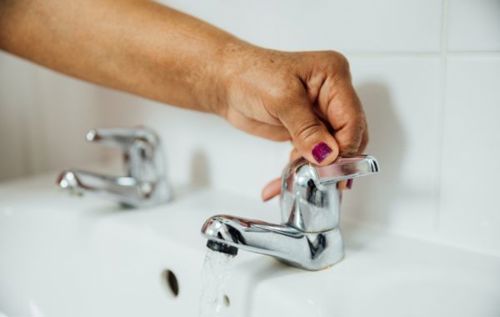 “If you find it challenging to turn on taps, you could get lever taps or taps with flat handles fitted,” says Christina.
“If you find it challenging to turn on taps, you could get lever taps or taps with flat handles fitted,” says Christina.
“Nowadays, most taps have levers or flat handles that you only have to turn a quarter of a turn, which are easier to use. If you don’t have these, then it’s worth considering.
"Modern bathrooms often have a button to turn on the shower. They’re much easier to use than twisting a round bath knob."
Shaving tips
Shaving can be tricky if you’re dealing with joint pain. “If you find shaving challenging, it might be worth using a lightweight electric shaver,” suggests Christina.
“You can even sometimes get ones that you can attach to the wall, so you simply need to move your face. Or you could think about using hair removal cream or getting it professionally done.”
Periods
For some people, pain and fatigue can make dealing with periods more challenging.
“Tampons or moon cups might be difficult to grip at times, so if you find this tough, you could give period pants a go,” says Christina. On top of this, you could try sanitary towels without wings or tampon inserters. It’s about finding what works best for you.
Being prepared is helpful. So, keep your period products in an easy-to-reach space, so you can grab whatever you need easily.
Nail-care
“If you’re over a certain age, some organisations like Age UK, offer a toe-cutting service,” says Christina. This might be helpful if you find it difficult to bend over your feet.
Alternatively, you could get your nails cut by a nail technician or beauty school, if this is within your budget and close enough to your home.
Aids and adaptations
There are many aids and adaptations that might make navigating the bathroom a little easier.
Aids are equipment that help you manage everyday tasks, for example, raised toilet seats. Adaptations are changes or additions to your home, for example, a bath with built in handles.
Aids and adaptations can be expensive. But you may be eligible to get aids and minor adaptations worth less than £1,000 for free from your local council. This is sometimes called ‘community equipment.’ To check if you’re eligible, simply ask your council for a free needs assessment.
If you need to make a major adaption to your home which will cost over £1000, you might also be able to get financial support from your local council. This is called a Disabled Facilities Grant.
However, the support you receive may vary, depending on your eligibility and where you live.
Get support
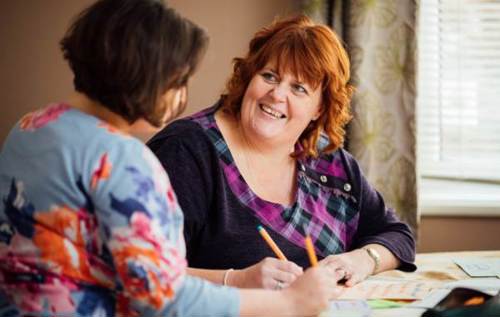 It can be frustrating if pain and fatigue are getting in the way of day-to-day tasks. So, remember you don’t have to face these alone
It can be frustrating if pain and fatigue are getting in the way of day-to-day tasks. So, remember you don’t have to face these alone
Ask yourself: could anyone offer a helping hand? Maybe a loved one could make breakfast, so you have more time to get washed and dressed. Or maybe you could get a professional, like a hairdresser or pedicurist, to help.
For more support, you could ask your healthcare team to refer you to an occupational therapist.
We're here for you
If you need support or advice, remember you can also:
- Call our free helpline on 0800 5200 520.
- Chat to our Arthritis Virtual Assistant.
- Join our online community.
- Stay in touch and follow us on X (Twitter), Facebook and Instagram.